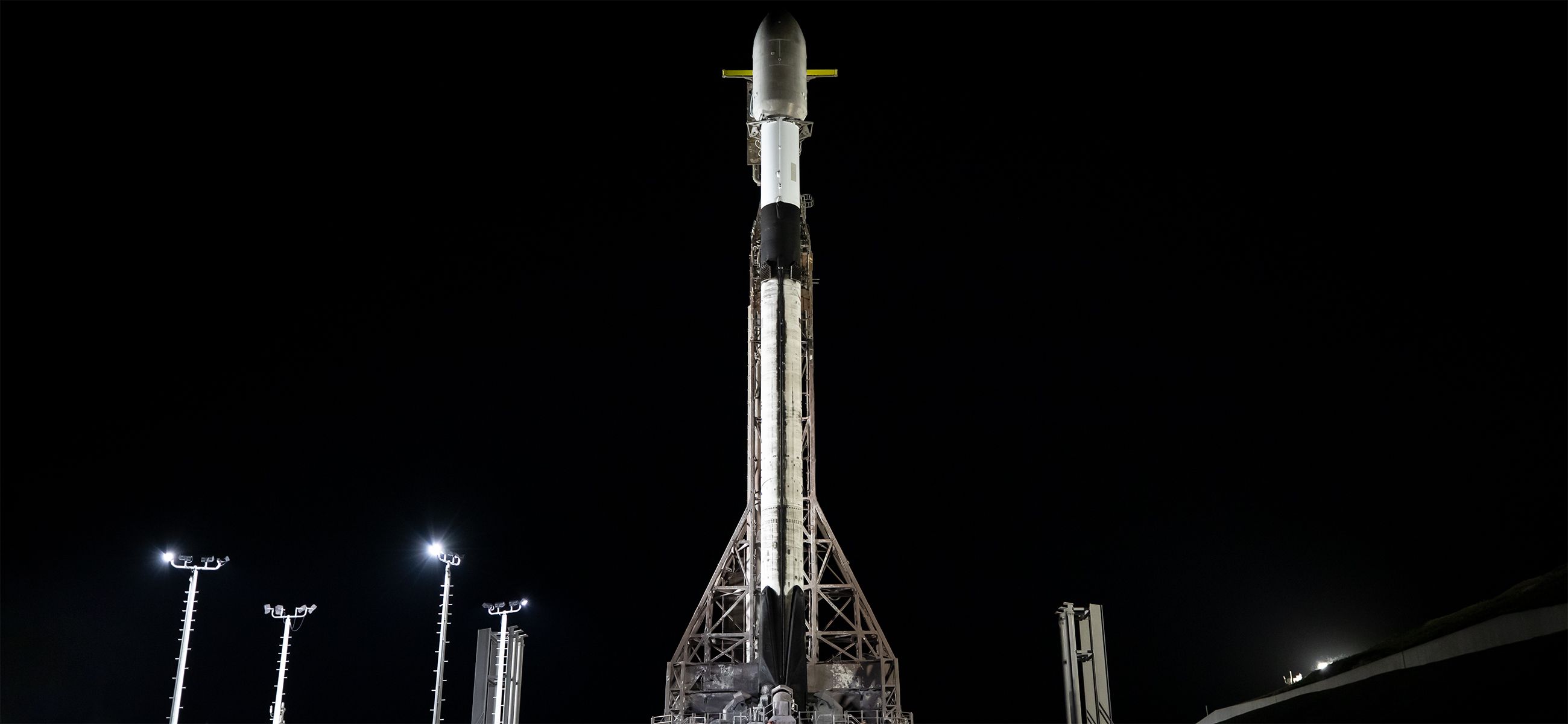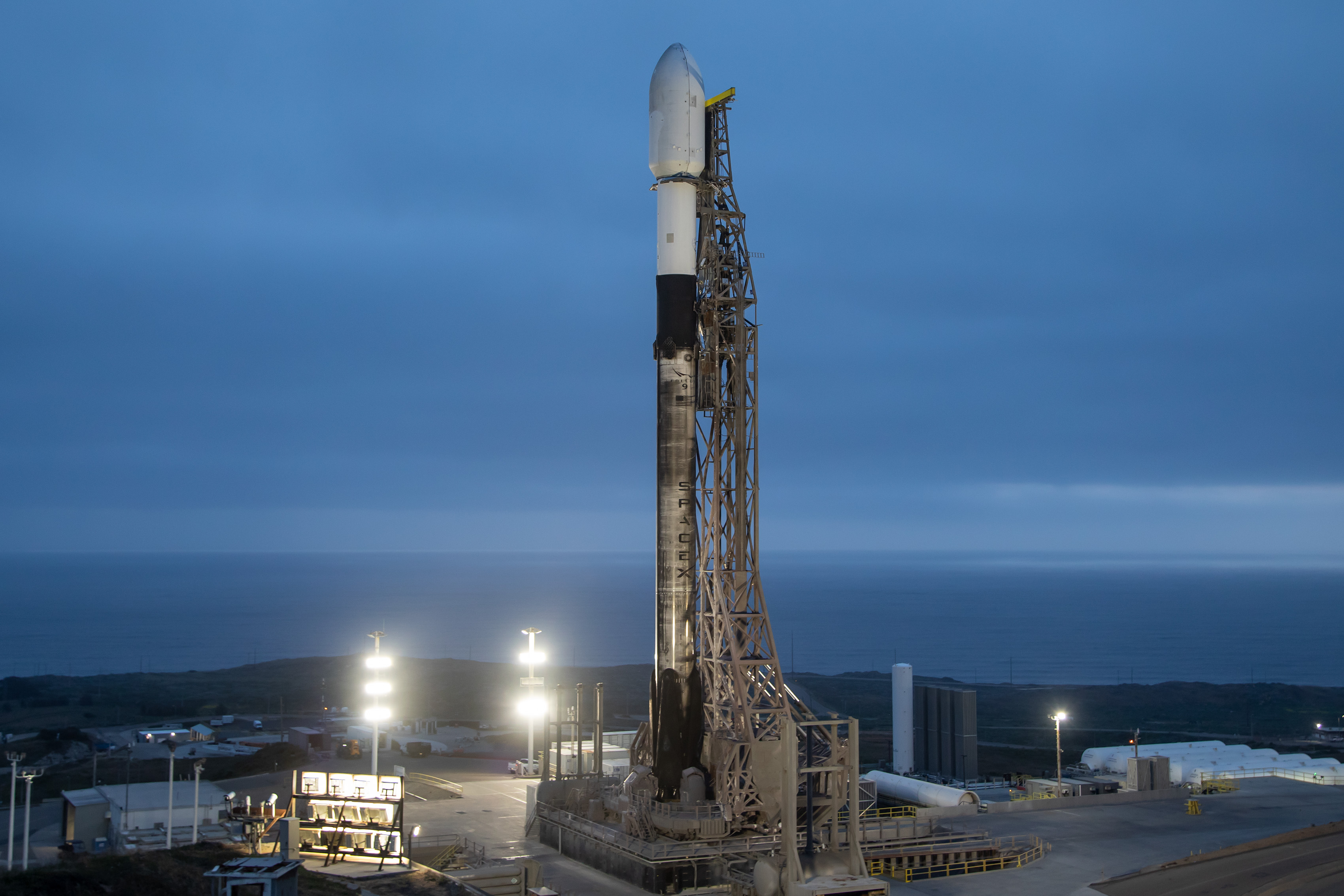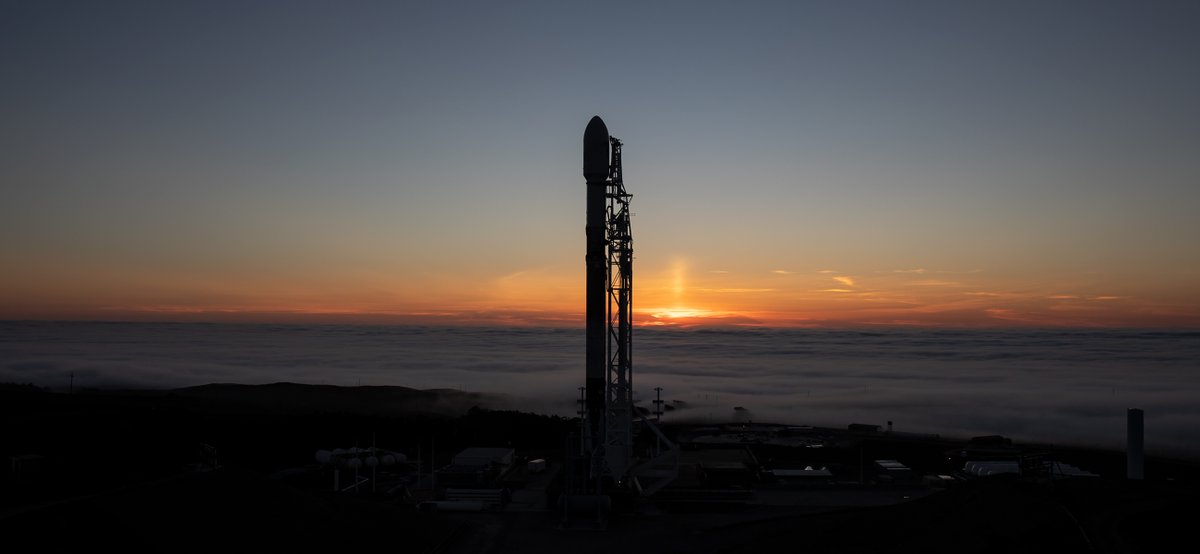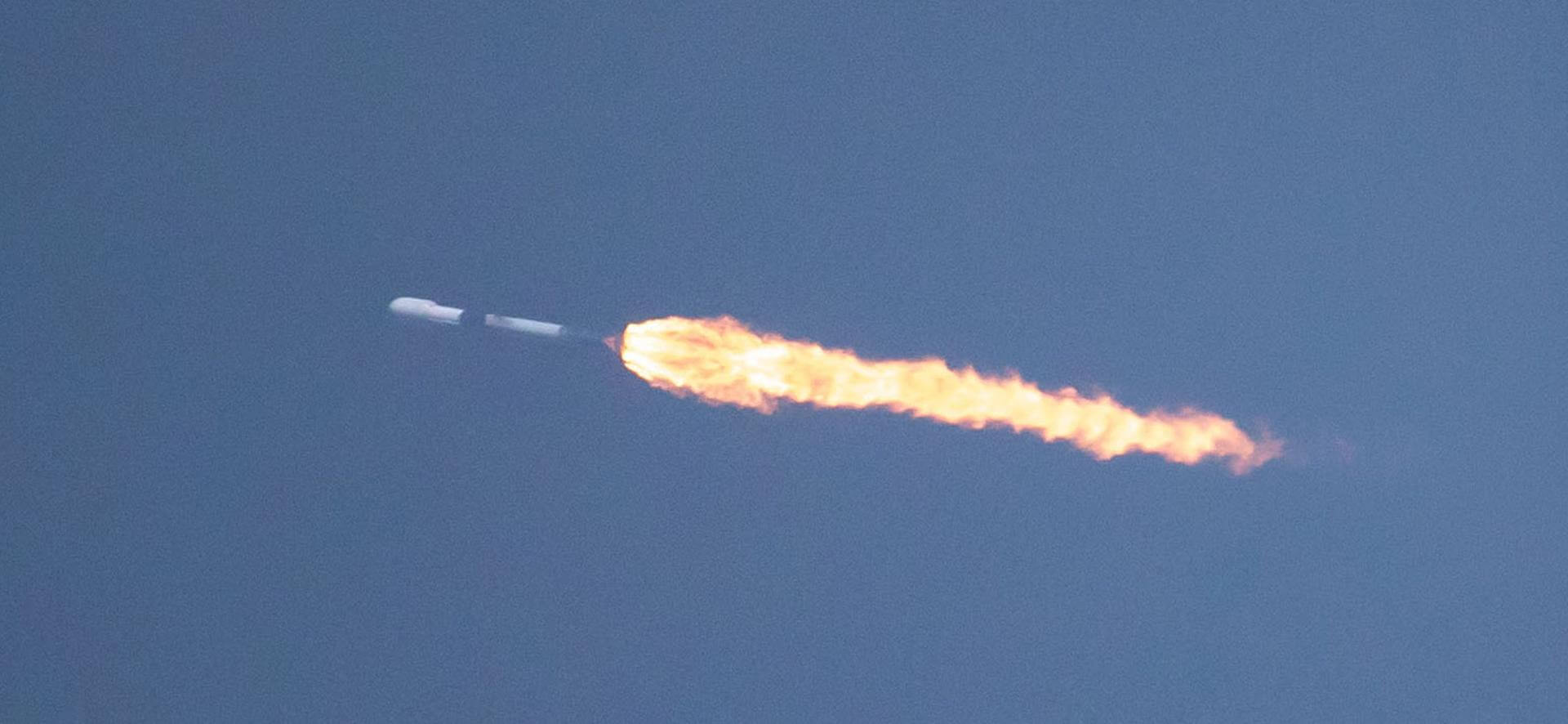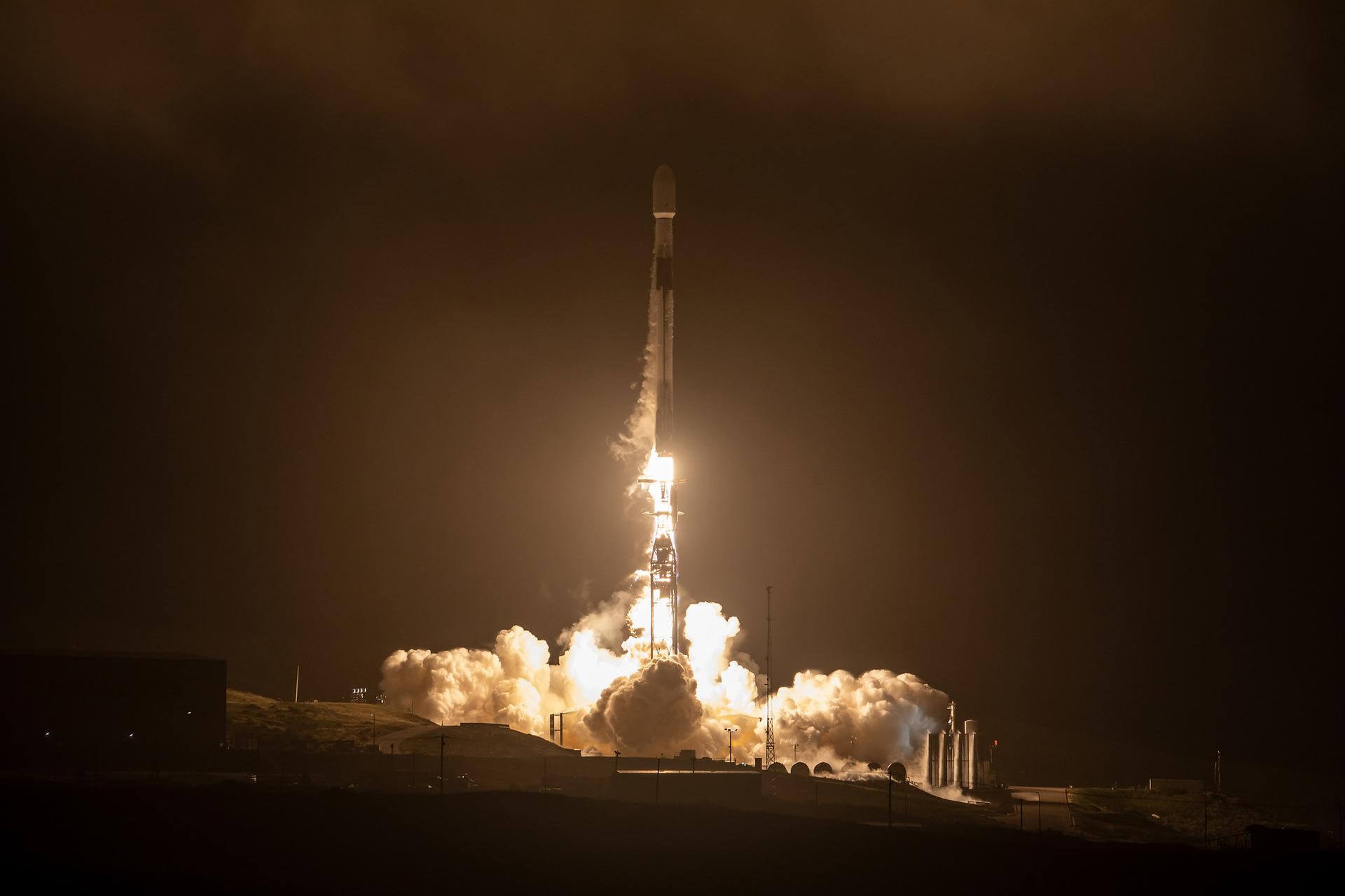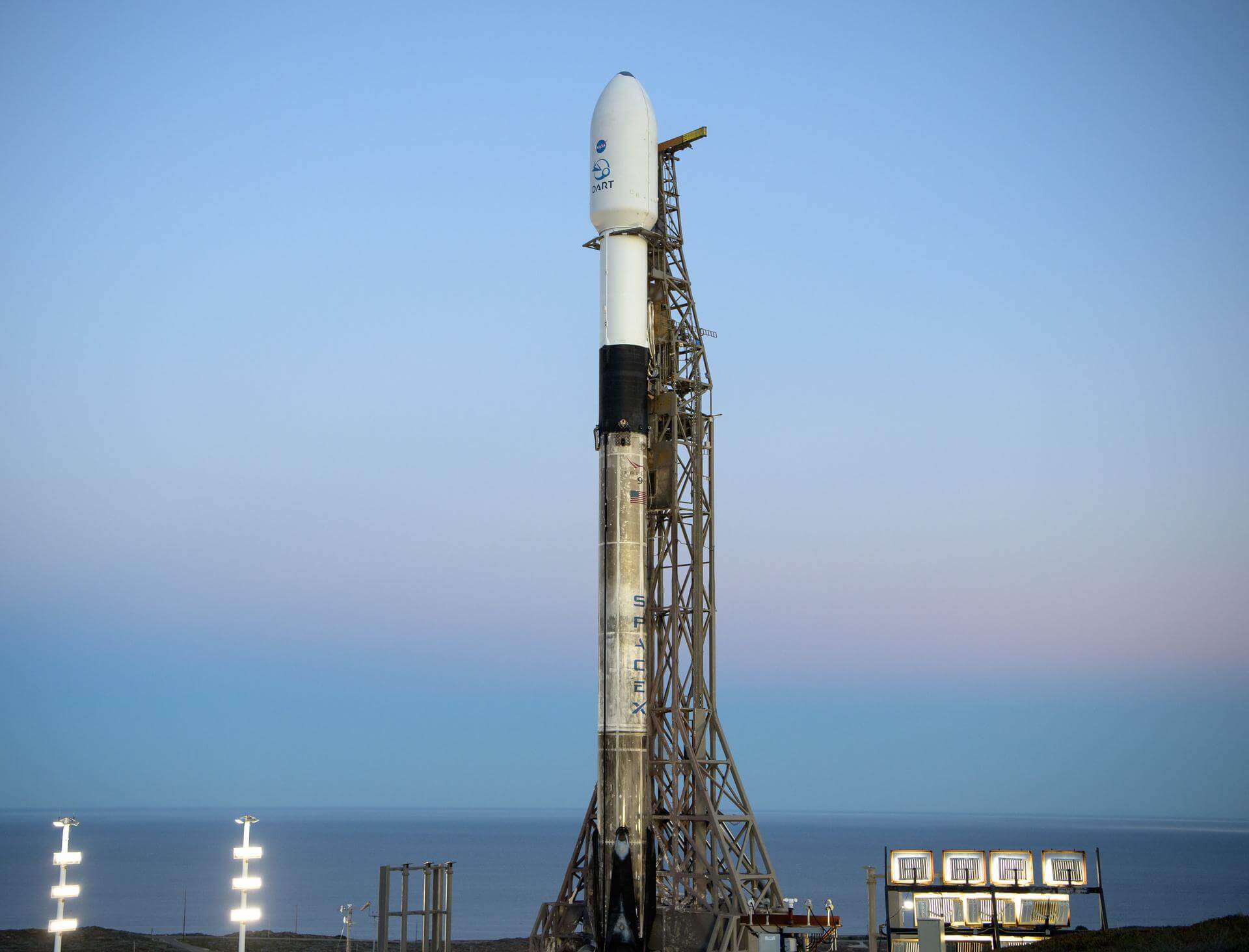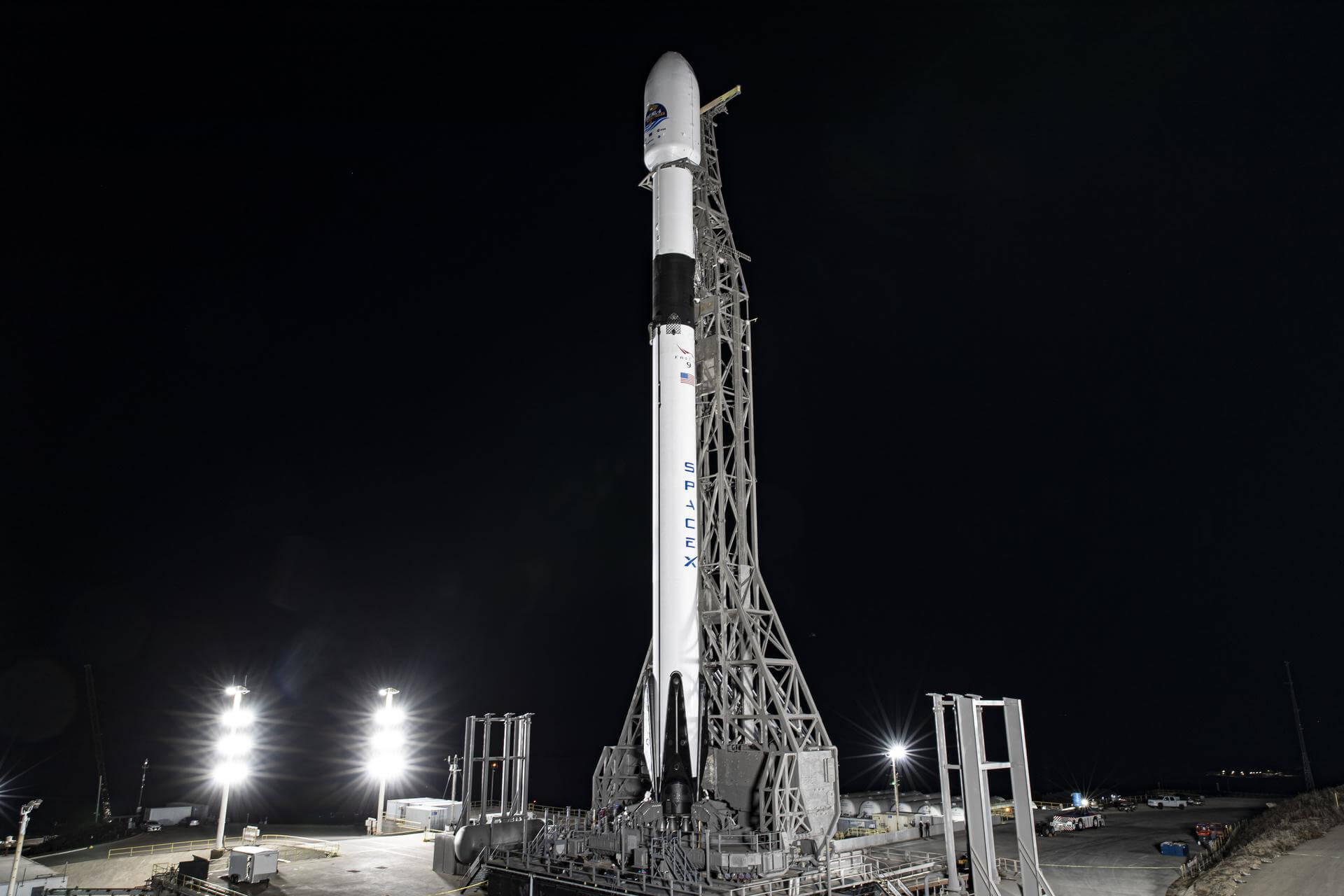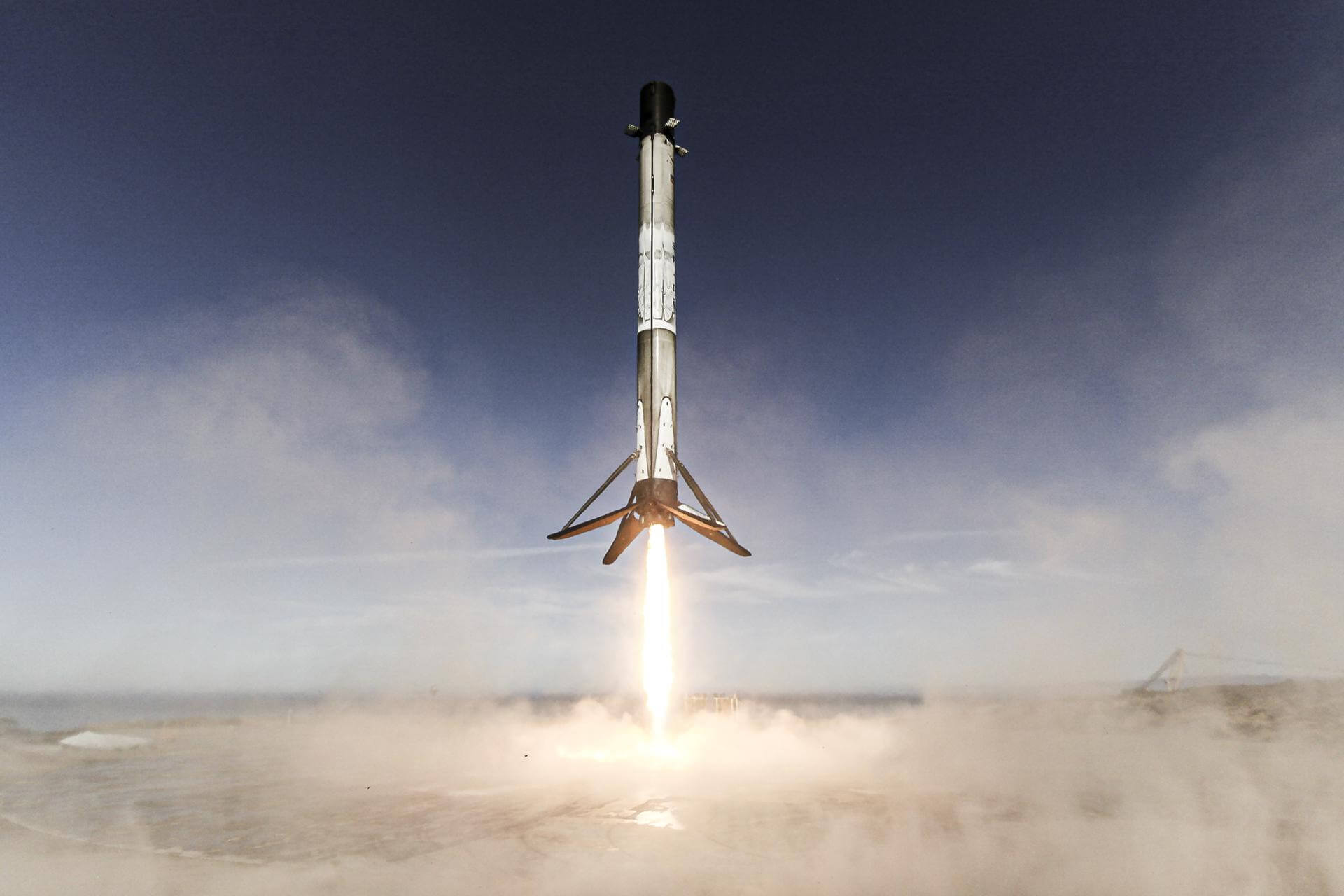
Falcon 9 - B1063
Details
Status - Active
Notable launches include Sentinel-6 and Dart.
Falcon 9 Block 5 | Starlink Group 11-22
SpaceX | United States of AmericaVandenberg SFB, CA, USA
June 4, 2025, 11:40 p.m.
Falcon 9 Block 5 | Starlink Group 11-9
SpaceX | United States of AmericaVandenberg SFB, CA, USA
April 28, 2025, 8:42 p.m.
Falcon 9 Block 5 | Starlink Group 11-7
SpaceX | United States of AmericaVandenberg SFB, CA, USA
March 26, 2025, 10:11 p.m.
Falcon 9 Block 5 | Starlink Group 11-6
SpaceX | United States of AmericaVandenberg SFB, CA, USA
Jan. 24, 2025, 2:07 p.m.
Falcon 9 Block 5 | NROL-149
SpaceX | United States of AmericaVandenberg SFB, CA, USA
Dec. 17, 2024, 1:19 p.m.
Status: Launch Successful
Mission:
Sixth batch of satellites for a reconnaissance satellite constellation built by SpaceX and Northrop Grumman for the National Reconnaissance Office to provide imaging and other reconnaissance capabilities.
Low Earth Orbit B1063 - Flight Proven ( ) Of Course I Still Love YouFalcon 9 Block 5 | NROL-167
SpaceX | United States of AmericaVandenberg SFB, CA, USA
Oct. 24, 2024, 5:14 p.m.
Status: Launch Successful
Mission:
Fourth batch of satellites for a reconnaissance satellite constellation built by SpaceX and Northrop Grumman for the National Reconnaissance Office to provide imaging and other reconnaissance capabilities.
Low Earth Orbit B1063 - Flight Proven ( ) Of Course I Still Love YouFalcon 9 Block 5 | NROL-113
SpaceX | United States of AmericaVandenberg SFB, CA, USA
Sept. 6, 2024, 3:20 a.m.
Status: Launch Successful
Mission:
Third batch of satellites for a reconnaissance satellite constellation built by SpaceX and Northrop Grumman for the National Reconnaissance Office to provide imaging and other reconnaissance capabilities.
Low Earth Orbit B1063 - Flight Proven ( ) Of Course I Still Love YouFalcon 9 Block 5 | Starlink Group 9-3
SpaceX | United States of AmericaVandenberg SFB, CA, USA
July 12, 2024, 2:35 a.m.
Falcon 9 Block 5 | Starlink Group 8-7
SpaceX | United States of AmericaVandenberg SFB, CA, USA
May 14, 2024, 6:39 p.m.
Falcon 9 Block 5 | Starlink Group 7-17
SpaceX | United States of AmericaVandenberg SFB, CA, USA
March 11, 2024, 4:09 a.m.
Falcon 9 Block 5 | Starlink Group 7-11
SpaceX | United States of AmericaVandenberg SFB, CA, USA
Jan. 24, 2024, 12:35 a.m.
Falcon 9 Block 5 | Starlink Group 7-7
SpaceX | United States of AmericaVandenberg SFB, CA, USA
Nov. 20, 2023, 10:30 a.m.
Falcon 9 Block 5 | Starlink Group 7-4
SpaceX | United States of AmericaVandenberg SFB, CA, USA
Oct. 9, 2023, 7:43 a.m.
Falcon 9 Block 5 | SDA Tranche 0B
SpaceX | United States of AmericaVandenberg SFB, CA, USA
Sept. 2, 2023, 2:25 p.m.
Falcon 9 Block 5 | Starlink Group 5-13
SpaceX | United States of AmericaVandenberg SFB, CA, USA
July 7, 2023, 7:29 p.m.
Falcon 9 Block 5 | Iridium-9 & OneWeb 19
SpaceX | United States of AmericaVandenberg SFB, CA, USA
May 20, 2023, 1:16 p.m.
Status: Launch Successful
Mission:
5 spare satellites for the Iridium NEXT constellation and 16 satellites for the OneWeb constellation (15 of current generation and 1 demonstration satellite for the next generation) on a share-ride.
Polar Orbit B1063 - Flight Proven ( ) Of Course I Still Love YouFalcon 9 Block 5 | Transporter 7 (Dedicated SSO Rideshare)
SpaceX | United States of AmericaVandenberg SFB, CA, USA
April 15, 2023, 6:47 a.m.
Falcon 9 Block 5 | Starlink Group 2-5
SpaceX | United States of AmericaVandenberg SFB, CA, USA
Feb. 17, 2023, 7:12 p.m.
Falcon 9 Block 5 | Starlink Group 4-31
SpaceX | United States of AmericaVandenberg SFB, CA, USA
Oct. 28, 2022, 1:14 a.m.
Falcon 9 Block 5 | Starlink Group 3-4
SpaceX | United States of AmericaVandenberg SFB, CA, USA
Aug. 31, 2022, 5:40 a.m.
Falcon 9 Block 5 | Starlink Group 3-1
SpaceX | United States of AmericaVandenberg SFB, CA, USA
July 11, 2022, 1:39 a.m.
Falcon 9 Block 5 | Starlink Group 4-13
SpaceX | United States of AmericaVandenberg SFB, CA, USA
May 13, 2022, 10:07 p.m.
Falcon 9 Block 5 | Starlink Group 4-11
SpaceX | United States of AmericaVandenberg SFB, CA, USA
Feb. 25, 2022, 5:12 p.m.
Falcon 9 Block 5 | Double Asteroid Redirection Test (DART)
SpaceX | United States of AmericaVandenberg SFB, CA, USA
Nov. 24, 2021, 6:21 a.m.
Status: Launch Successful
Mission:
Double Asteroid Redirection Test (DART) mission is the first-ever mission to demonstrate the capability to deflect an asteroid by colliding a spacecraft with it at high speed, a technique known as a kinetic impactor. DART is a planetary defense-driven test of one of the technologies for preventing the Earth impact of a hazardous asteroid: the kinetic impactor. DART's primary objective is to demonstrate a kinetic impact on a small asteroid. The binary near-Earth asteroid (65803) Didymos is the target for DART. While Didymos' primary body is approximately 800 meters across, its secondary body has a 150-meter size, which is more typical of the size of asteroids that could pose a more common hazard to Earth. The DART spacecraft will achieve the kinetic impact by deliberately crashing itself into the moonlet at a speed of approximately 6 km/s, with the aid of an onboard camera and sophisticated autonomous navigation software. The collision will change the speed of the moonlet in its orbit around the main body by a fraction of one percent, enough to be measured using telescopes on Earth.
Heliocentric N/A B1063 - Flight Proven ( ) Of Course I Still Love YouFalcon 9 Block 5 | Starlink 28
SpaceX | United States of AmericaCape Canaveral SFS, FL, USA
May 26, 2021, 6:59 p.m.
Falcon 9 Block 5 | Sentinel-6 Michael Freilich
SpaceX | United States of AmericaVandenberg SFB, CA, USA
Nov. 21, 2020, 5:17 p.m.
Status: Launch Successful
Mission:
The Sentinel-6 Michael Freilich and Sentinel-6B make up the Sentinel-6 mission, also known as Jason Continuity of Service (Jason-CS), which is a partnership between NASA, NOAA, ESA, and EUMETSAT. This mission continues the long-term global sea surface height data record begun by first Jason satellites in 1992. Named after former NASA Earth Science Division Director Michael Freilich, Sentinel-6 Michail Freilich will provide altimeter data necessary for ocean climate monitoring, ocean modelling and numerical ocean prediction, weather forecasting, marine meteorology, coastal altimetry and modelling. A secondary objective of the mission is to collect high-resolution vertical profiles of temperature, using the Global Navigation Satellite System (GNSS) Radio-Occultation sounding technique, to assess temperature changes in the troposphere and stratosphere and to support numerical weather prediction. Sentinel-6 Michael Freilich is to operate in a highly-inclined circular orbit at an altitude of 1336 km, with an operational mission lasting 5 years. Near-identical Sentinel-6B is planned to follow-up shortly after.
Low Earth Orbit #SeeingTheSeas B1063 - Maiden Flight Landing Zone 4Falcon 9
MTG-S1
Launch Complex 39A - Kennedy Space Center, FL, USASecond of EUMETSAT's third generation of weather satellite.
New Shepard
NS-33
West Texas Suborbital Launch Site/ Corn Ranch - Corn Ranch, Van Horn, TX, USANS-33 is the 13th crewed flight for the New Shepard program and the 33rd in its history.
Falcon 9
Starlink Group 15-7
Space Launch Complex 4E - Vandenberg SFB, CA, USAA batch of 26 satellites for the Starlink mega-constellation - SpaceX's project for space-based Internet communication system.
H-IIA
GOSAT-GW (Ibuki GW)
Yoshinobu Launch Complex LP-1 - Tanegashima Space Center, JapanGOSAT-GW (Greenhouse Gases Observing Satellite Greenhouse gases and Water cycle), also known as Ibuki GW and formerly known as GOSAT 3, is JAXA's nex…
Electron
Symphony In The Stars
Rocket Lab Launch Complex 1B - Rocket Lab Launch Complex 1, Mahia Peninsula, New Zealand'Symphony In The Stars' is the first of two dedicated missions on Electron to deploy a single spacecraft to a 650km circular Earth orbit for a confid…

